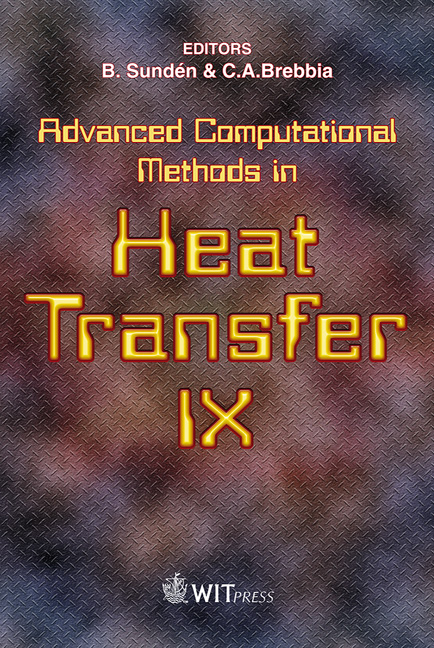Viscous Dissipation And Temperature Dependent Viscosity Effects In Simultaneously Developing Flows In Flat Microchannels With Convective Boundary Conditions
Price
Free (open access)
Transaction
Volume
53
Pages
10
Published
2006
Size
450 kb
Paper DOI
10.2495/HT060441
Copyright
WIT Press
Author(s)
S. Del Giudice, S. Savino & C. Nonino
Abstract
The effects of viscous dissipation and temperature dependent viscosity in simultaneously developing laminar flows of liquids in straight microchannels of arbitrary but constant cross-section are studied with reference to convective thermal boundary conditions. Viscosity is assumed to vary linearly with temperature, in order to allow a parametric investigation, while the other fluid properties are held constant. A finite element procedure, based on a projection algorithm, is employed for the step-by-step solution of the parabolized momentum and energy equations. Axial distributions of the local overall Nusselt number and of the apparent Fanning friction factor in flat microchannels are presented with reference to both heating and cooling conditions for two different values of the Biot number. Examples of temperature profiles at different axial locations are also shown. Keywords: laminar forced convection, microchannels, entrance region, temperature dependent viscosity, viscous dissipation, convective boundary conditions. 1 Introduction In several heat transfer problems concerning microchannel flows, the thermal resistance of the channel wall must be taken into account in order to obtain accurate solutions. Moreover, in many situations of practical interest, fluid velocity and temperature fields develop simultaneously, resulting in overlapping hydrodynamic and thermal entrance regions. This occurs when fluid heating or cooling begins at the microchannel inlet, where also the velocity boundary layer
Keywords
laminar forced convection, microchannels, entrance region, temperature dependent viscosity, viscous dissipation, convective boundary conditions.





